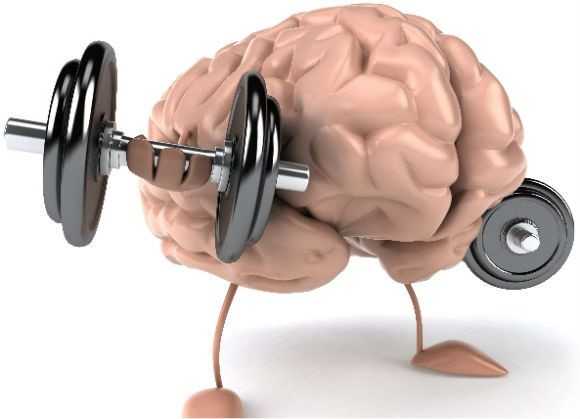We use the term ‘Muscle Memory’ quite often, but aren’t very clear to the real meaning of the subject. If we understand in simple terms, muscle memory is a sort of memory that unconsciously helps us to perform various motor tasks, that we have somehow learned through daily habit, either through intentional training or simply as the result of informal, unintentional, or even unconscious learning from repeated prior experience.

In terms of scientific terminology, we call this memory as ‘procedural memory’ or ‘motor memory’, because it enables us to perform various motor tasks/procedures or skills in an automatic or spontaneous fashion, without conscious deliberate effort of how the procedure should be followed and without any proper calculation of how one identifies and achieves the various steps involved in the procedure and how one proceeds from step to step.
Classic examples would be walking, cycling, driving, swimming, tying your shoes, playing a musical instrument etc. If you observe carefully, these are extremely complex skills, which takes time to learn & master. They involve a coordination of senses and muscle action. Slowly, when you practice these skills for a longer period of time, these skills or the related patterns get deeply embedded in your Central Nervous System (CNS).
By practicing certain activities such as walking, swinging a tennis racquet, playing a piece of music on the piano, or driving a car, we learn to execute these complex and coordinated activities with little or no input from the part of the brain that controls voluntary, willed muscle contractions—the cerebral primary motor cortex.
Once a movement pattern has been initially learned in the cerebral motor cortex, it is transferred to the basal ganglia, located deeper within the brain. Consequently, it’s possible for people to execute complex coordinated movement patterns while paying little or no attention, perhaps even thinking of something else entirely.
Thinking in these terms, the concept of muscle memory as it relates to movement seems fairly straightforward: memorized movement patterns are stored in and released from the basal ganglia of the brain.
However, this is a completely different phenomena, than what we understand, when we discuss muscle hypertrophy and strength. That’s why the term ‘muscle memory’ can be a bit confusing.
The phenomenon that “skeletal muscle may hold some kind of memory” originates from observations in humans showing that previously trained individuals acquire muscle mass and strength more quickly upon retraining. This phenomena was first observed in a 1991 study, which showed that women regained their muscle strength and fibre size during 6 weeks of retraining as quickly as compared with the initial 20 weeks of strength training.
But, there is no known mechanism for memory in muscle cells, and, to date, the long-lasting effects of previous training have been attributed to motor learning in the central nervous system. However, it has been reported that muscles can remain hypertrophic after several months of detraining.

For e.g. in a 2003 study, it was seen that strength gains from 2 years of resistance training in older individuals are not entirely lost even after 3 years of detraining.
Let’s try and understand the reason behind this. Muscle cells (or muscle fibres) contain hundreds to thousands of little nuclei/Myonuclei. The nuclei/myonuclei are little control centres, allowing for the rapid, and coordinated growth and repair of muscle tissue.
Sustained hypertrophy of muscles requires the addition of new nuclei by muscle stem cells (satellite cells). More nuclei means more efficient growth and repair signals, which are required to adequately meet the growing cell’s/muscle fibre’s needs. Thus, with increase in muscle size, the number of nuclei increases.
Also, we need to remember that our muscle cells can’t produce nuclei. Instead they take it from another type of cell called – stem cell. Stem cells are special cells that can be developed into many different types of cells in the body.
There are many different kinds of stem cells in the body, but the kind most involved in muscle growth are referred to as satellite cells. These cells lie dormant near muscle cells and are recruited as needed to help heal and repair damaged muscle fibres.
Once called upon, satellite cells attach themselves to damaged muscle cells and donate their nuclei, which aids in repair and increases the cells’ potential for more size and strength. (This is one of the processes that causes your muscles to get bigger and stronger when you lift weights.)
Initially it was thought that these nuclei are lost during muscle atrophy. But, it was seen that, previously added nuclei are more permanent than once thought. Sure, muscle fibre size will decrease with de-training, but the added muscle nuclei from periods of focused growth and strength training will remain for a long time.
A 2013 animal study, showed that nuclei that are gained during overload hypertrophy are not lost during 3 months of muscle atrophy when the muscle returns to its original size. Even though the muscle size decreased during this period of inactivity, the number of nuclei did not.
That’s great news, as it’s like a long-term investment in strength. Otherwise, it would be a total waste of resource for your body to create more nuclei, just to lose them all with a bit of detraining.
Though, it’s still not clear, for how long these nuclei actually remain. But studies have shown that, muscle memory lasts several years. In skeletal muscle the memory duration is at least 15% of the average life expectancy (about 80 years). That is, at least 12-15 years after cessation of exercise caused hypertrophic.
Studies have now shown a very strong genetic link to muscle memory. Periods of skeletal muscle growth are ‘remembered’ by the genes in the muscle, helping them to grow larger later in life. Researchers studied over 850,000 sites on human DNA and discovered the genes, which helps when muscle grows following exercise, then returns back to normal and then grows again following exercise in later life.
That is also the reason that it’s harder for someone who has never exercised, to start building muscles later in life, than someone who exercised, took a break, and then comes back to it.

Another question which often comes up with muscle memory is that, how long does it take to form the muscle memory? Now the answer is not very clear on this. But generally, consistent training for hypertrophy & strength, 3-4 times per week, for 4-8 weeks is a time we can consider.
Of course, harder and longer you train, better would be the muscle memory. That’s why a person training consistently hard for years, is able to regain muscles much faster, after a period of detraining.
However, the entire nuclei theory has been challenged recently, when a meta-analysis study, found that, skeletal muscle hypertrophy was associated with higher myonuclear content that was retained in rodents, but not humans, with atrophy. In humans, sarcopenia was accompanied by a lower myonuclear content.



